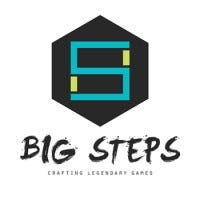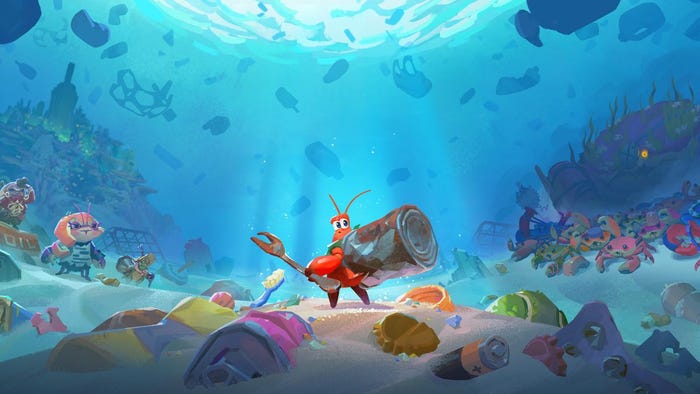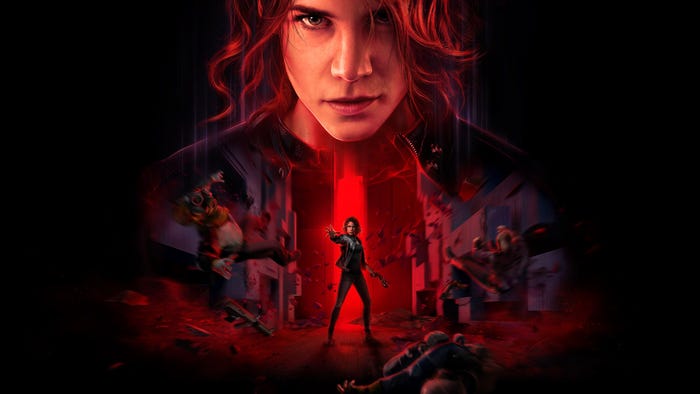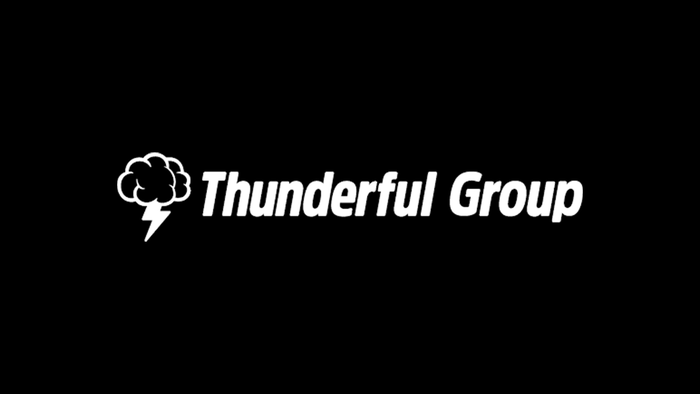
Featured Blog | This community-written post highlights the best of what the game industry has to offer. Read more like it on the Game Developer Blogs.
Summoner Sweetheart Post-Mortem
A lengthy post-mortem report on the production of "Summoner Sweetheart," an indie visual novel & RPG game developed by Big Steps.
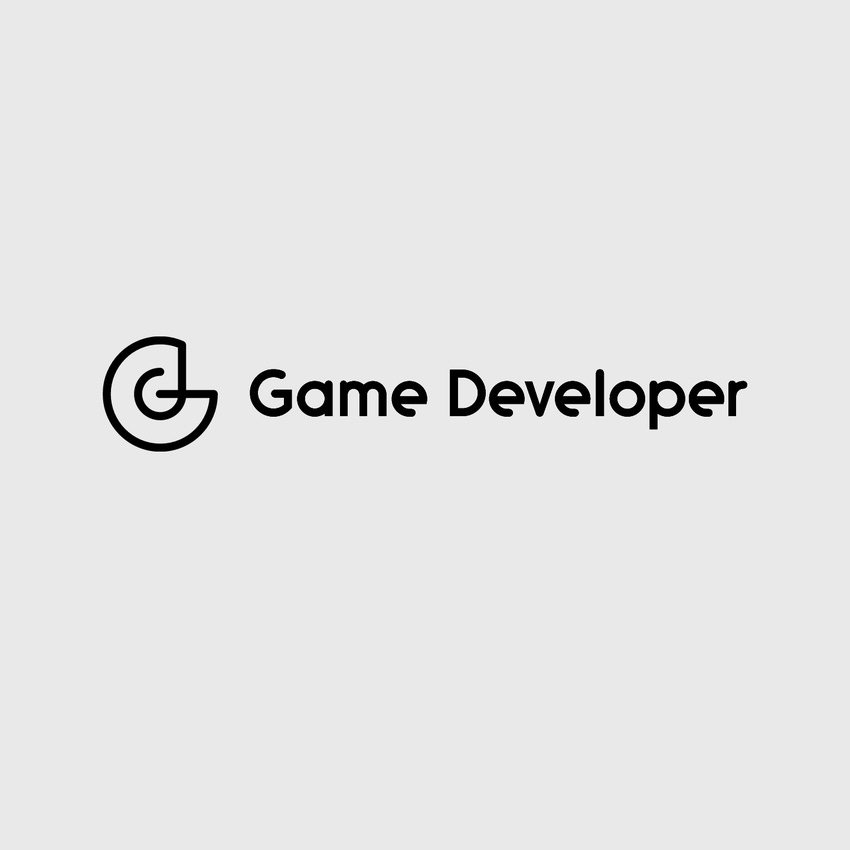
This will be a very extensive report due to the nature of this project’s scope and how it has shifted during the entire development phase. It started off as a month-long game jam project in March, but continued until late June – almost three months longer than expected.
You know how they say the last 10% is 90% of the work. Well, that’s an understatement, I assure you.
BEGINNING
My Background
The only prior experience I had in game creation was creating artwork for others, but never was I involved in the development processes for these games. I was hoping NaNoRenO, the game jam for visual novels, would be a great way to get my feet wet.
The Team
Knowing from the beginning I wanted to participate in NaNoRenO (March 1), I started recruiting partners in January on various forums: LemmaSoft, Deviantart, Voice Acting Alliance, Facebook groups, personal contacts, etc. For issues later outlined, recruiting continued until mid-May. By March, I had a confirmed set of people to help - illustration artists, writers, musicians, pixel artists, voice actors & actresses, and PR. It started off with roughly 13 members and steadily grew into an enormous 30+ member team over time.
The Vision
These were the things that I had in my head going in:
Relationship system
League of Legends based
Hack ‘n slash dungeon adventure
Time system to “save the day”
For a better understanding of what our starting goals were, you can check out the very basic and rough game design docs written in February (for internal purposes).
General GDD: http://bit.ly/generalGDD
GDD for Coders: http://bit.ly/codersGDD
FAQ for Team: http://bit.ly/BigStepsFAQ
During this time, I drafted a lot of deadline sheets and e-mails to ensure that deliverables were provided.
Initial Deadlines: http://bit.ly/BigStepsDeadlines
Asset Checklist: http://bit.ly/BigStepsAssets
Tools
Syncplicity: file uploads
Google Drive: for notes, spreadsheets, etc.
Skype: daily communication and updates
Ren’py: developing the visual novel
PyGame: developing the dungeon
Originally, we had planned to use the Ren’py RPG battle engine made by Eviscerate, but after the first week of development, we believed its features lacked what we needed
Meetings
During the game jam, we had a few in-person and online meetings to solidify our vision, assign appropriate responsibilities, and clear up any confusions. A lot of them were informal, 1-on-1 chats on Skype and Facebook (which were not recorded).
Coders Meeting 2.27 - http://bit.ly/coders227
Coders Meeting 3.3 - http://bit.ly/coders33
Dungeon Meeting 3.4 - http://bit.ly/dungeon34
Writers Meeting 3.5 - http://bit.ly/writers35
Writers Meeting 3.13 - http://bit.ly/writers313
VN Coding Meeting 3.21 - http://bit.ly/vn321
DURING THE GAME JAM
(March 2015) Week 1
We started building out the story and character development. None of the other teams (except art and music) could really do anything until we had the writing down, so it was a big burden for the Writing team. Regardless, everyone was working hard and deadlines were being met. This was when a lot of meetings and back-and-forth conversations happened.
Things that worked:
Meetings made it extremely helpful to keep us on track and not deviating from the overall vision of the game
Skype conversations were plenty and people were very vocal about their issues, concerns, successes, etc.
Deadlines were a great way to keep everything in check and making sure that people were working in a pace that allowed them to deliver.
Things that made it difficult:
Prior assets were nonexistent. Several people were waiting on items from other teams to do their own jobs.
Time zones were a problem because people came from all over the world – USA, Europe, Egypt, Australia, etc. Meetings could be at 4AM for some and 12PM for others.
Tools weren’t always utilized by everyone. Members who did not have access to specific software would instead deliver it to me and I would then upload it on their behalf.
Things that didn’t work:
RPG Battle Engine developed by Eviscerate would no longer work with the scope we outlined for the game. We had to scrap the idea and decide to create our own from scratch.
(March 2015) Week 2~3
Motivation was slowly plummeting after the first week. We had to immediately cut down on scope due to its overly ambitious tasks and requirements. Hopes were too big and we couldn’t deliver what we hoped.
Things that worked:
Emails became little snippets of motivation for people who were starting to lose interest. It gave them a wake-up call saying that we’re still in the game and working hard.
The MVPs are the true stars of this project. Everyone who worked hard worked really, really hard to pump stuff out.
Things that made it difficult:
Scope of the project was impossible for the time frame of 1 month. It became increasingly apparent each day that having all these features was unreasonable. We took out a lot of events, items, and ideas to the point that if we took out any more, therewouldn’t be much left.
Members dropping was a common occurrence during mid-March. Whether it was due to personal reasons, other obligations, or lack of motivation, a concerning amount of people would leave or no longer have time. As a result, recruiting activities was a constant need throughout the entire jam.
Over promising occurred every day. Sometimes we don’t know how much we can handle. We think something can be done, but unknown circumstances can and will prevent us from keeping promises. Part of knowing what we can handle is to prepare for things that may make it difficult to deliver.
Medical emergencies happened. There were a couple of people hauled off to the ER from overworking. Nothing too serious, don’t worry. We had to step back and make sure people weren’t burning out and potentially harming themselves.
Drama is inevitable. No, not the “omg! He cheated on me!” sort of deal. I’m talking about the ones that are related to legalities. There were a few instances that caused tension among members, but thankfully, things were settled after professional discussion and compromise.
Other obligations like work and school interrupted people’s workload and involvement with the project. It’s a given because it was in the middle of school and people had jobs.
Things that didn’t work:
Deadlines for a majority (not all) of people did not produce results, myself included. The things that weren’t addressed in prior weeks had to be addressed the current week, which led to a lot of push-backs and missed goals.
Goal assessment was much too hard to do because it was difficult to accurately understand what was doable and what wasn’t.
Constant badgering of people to turn in their assets was a fruitless endeavor. People were either too busy or unmotivated to deliver, so lots of items were done subpar or not finished at all.
(March 2015) Week 4 – Version 0.5
The final rush of things was definitely one of the hardest times in the game jam. 20% of the team does 80% of the work was definitely portrayed here.
Things that worked:
Recruitment, like I said before, was a recurring process during the game jam. Although exhausting, it allowed us to continue developing and producing assets for the game.
Temporary help was a necessity to produce our version 0.5 that came out on April 1. I asked for assistance from friends and friends of friends. Most of the basic things that were released was only possible because of them.
Hype helped keep the morale up for the remaining team members. When we got e-mails, notes, shout-outs, etc., it made us excited and all the more happy to continue work.
Nearing the end was ecstatic news. It helped us focus on what was absolutely needed to publish our alpha (not even) game. A lot of things were still missing at that point, but we knew the bare minimum to include and hopefully keep gamers interested in an update.
Things that made it difficult:
Emotions were all over the place for a few people, mostly myself. It goes hand-in-hand with pressure. Poor judgments and decisions were made as a result of my inability to handle my emotions at the time.
Pressure comes with deadlines. We wanted to keep the NaNoRenO deadline as much as possible. I was very adamant about it, but that meant an extreme amount of stress for myself and the team.
Scope was still too big. The fact that we wanted to include a dungeon at all (especially from scratch) made this project impossible to be finished in one month. For this reason, we decided on version 0.5.
Things that didn’t work:
Dungeon stuff. Period. Mechanics, organization, coding, etc. Everything was a mess because, well, it’s hard. Many of the graphics were finished, but we didn’t know how to put it in without it being utterly poop. We wanted to give the awesome pixels their justice.
Teamwork at this point was very bare. Only a core group of roughly 4-6 people were working constantly to make the remaining portions of the game.
AFTER THE GAME JAM
Summoner Sweetheart’s version 0.5 came out on April 11, which means we did miss the deadline for NaNoRenO unfortunately. Here are a couple e-mails I sent outlining what to expect for the release:
E-mail about extension (March 30) – http://bit.ly/nanoext
E-mail about timeline (March 30) – http://bit.ly/nanoTimeline
Warning: I sound like an asshat in these e-mails!
When the game was published, we had a celebration night for the local members as a big thank you to everyone who volunteered and sacrificed so much of their time to allow Summoner Sweetheart to get this far.
Afterwards came the hard part. The first thing I had to do was decide whether to continue the game.
Should we go through another 2 weeks of development hell to get this finished or throw away everyone’s hard work to stop development?
That was the question stuck in my head. As you know, I went with the former option, which wasn’t very accurate anyways.
Things that changed going into the extension:
Cut down on “core” members. I wanted only to rely on those who showed a lot of dedication and hard work. That meant making a team of less than ten people to account for, knowing that they could do what they say is possible.
Change and add deliverables. It sounds stupid to add more on top of what we couldn’t deliver, but with how much we cut out in the scope for version 0.5, a lot of the events seemed jarring, incomplete, and generally not acceptable. This was especially true for the story content. Many of the girl scenes were short (just a few hundred words), with not many to encounter. You can see the new list of deliverables we added in this e-mail here: http://bit.ly/ssCoreMem
Recruiting happened less often. Before, I believed the solution to the problem of little assets was more people to pump out work. This was partially true. We needed people. What the team lacked, however, was people who could produce more than 1 or 2 items before leaving. As a result, I only looked for people we absolutely needed (i.e. background artists); our “core” team would handle the rest.
Be more involved with the dungeon. I had little say over the dungeon because I didn’t specialize in anything related to it – coding, pixels, etc. But one thing I ended up doing during development was 1) helping with hard-coding the placements of assets, and 2) creating pixel characters. I needed to know more on what went behind-the-scenes for the dungeon because it was such a large part of the game and it was a problem that I was blind to its progress.
To sum up our journey in April and May:
Progress and development pace was excessively slower to prevent more burn-outs and allow people to recover from the crunch of the last run.
It was still hard pumping out some of the deliverables we needed.
I hadn’t helped out with the one-man dungeon coding team as much as I should have (sorry, Kevin!).
School started up again and most of the volunteers were full-time students (some with jobs as well)
There was miscommunication between some of the members and we slipped our internal tentative deadline to the public (May 1).
People were getting excited and pumped, but as we were nearing the end of April, the May 1 deadline became apparently impractical. As a result, we made an official announcement the game will be shipped on May 9.
Man, I’m sorry I couldn’t help out with the dungeon more, Kevin. L
We missed the deadline, and I made the horrible decision to avoid the public and disappoint loving fans.
On May 18, we released version 0.9. In the previous release, none of the dungeon was included and some content (story-wise) and artwork didn’t make it in. In this version, a small portion of the dungeon was accessible and all new and revamped VN content was inputted (minus some missing voice actor lines).
THE LAST 10%
What we thought would be over was far from it. By this time, the only person left was… me. Everything was completed except for the dungeon. Our dungeon coder no longer had any time to spare for the project (he is a math graduate student, working 20-30 hours a week). I was haunted by the same question – should we cancel or go on?
It was so close to completion, I couldn’t just let it go. So I searched far and wide for that right teammate to finish the dungeon. Testing the waters, I went through roughly 8 volunteers to take over Kevin’s extensive work. Matthew Fournier was the answer. On May 19, he joined our team and was the only one who continued coding until completion.
It was a bumpy ride. I had to brief him on the code and explain what I knew about it from my limited knowledge and time with the program. The first week was spent on understanding the code. Let me tell you – it’s not an easy task reading another person’s logic, especially if the text was written not expecting other people to understand it. People work and think in different ways.
A lot of the features that were missing in the dungeon weren’t implemented because PyGame has such limited capabilities. As a result, Matthew started over from almost the beginning, taking and extending some code from Kevin’s. I don’t understand the technical jargon, but a great many changes were made in the engine in order to make certain functions work. Mostly, we wanted the dialogue. A lot of stress came from attempting to come up with an answer to the problem of popping up a box of text in PyGame. A few weeks were dedicated just to find the solution (which was to move everything over to Ren’py).
Fast forward to today: we finished the game yesterday. We are releasing a minute before midnight on June 23, 2015, just a few hours from now.
It isn’t perfect. There are so many problems to list, let alone any QA testing that we haven’t done. However, we were able to get in a fully functional (with the rare crashing) dungeon into Summoner Sweetheart. All writing is in, along with artwork and music. Some voice lines are missing, but it’s not completely detrimental to its completion.
Thank you for such a wild, crazy, stressful, but overall wonderfully complex journey. Without everyone who contributed to this game, it would have been insurmountable.
THE ASSESSMENT
Now to briefly answer some questions after reviewing this entire roller coaster ride.
Was this project worth your time? Did you make the right choice in taking it on?
Yes and no. Yes because it has taught us so many valuable lessons about game development and learning to manage time, responsibilities, and people. I’ve learned a lot about myself and how I react in certain circumstances and situations as many other teammates have. To some extent, this experience has definitely warped me into a different person.
It was worth our time because we’ve gained valuable, real insight into an industry that has been traction for years. I think it was the “right choice” to tackle it because everyone involved now understands what it’s like to bite off more than we can chew and how to come back from that hurdle.
Did you succeed in what you intended to do?
I had two goals. One: complete a game. Two: complete a kickass, awesome and incredible game. We accomplished one of those two goals. The second one can be explored another day.
Did you go off course?
No, I don’t believe so. We were able to reduce scope several times throughout the project. Yes, I’m sure we could have minimized workload much more, but we wanted to keep a lot of the “awesomeness” that would come with more assets. However, the general direction of the project stayed the same throughout development.
Did you leave something undone or underdone?
Yes, a lot of it, both in the visual novel and dungeon portion. So many designs and graphics that were made didn’t end up being put in because it would require too much change from other parts of the game. Some of the artwork was also done quickly and hasn’t been as polished as we’d like.
Was your team the right people to do this project?
There will always be people who are more talented than you, me, and us. I don’t believe there is a “right team of people” to make a game. There are only people who want to make games they believe in, and that’s what we are. We are game devs who believed in our product and made it.
What was the single most frustrating part of the project?
Not meeting deadlines, which resulted in under-delivering and overpromising, and in turn disappointing the public who was hopefully expecting our game’s launch.
How would you do things differently next time to avoid this frustration?
Make a smaller team of less than ten members
Emphasize local game dev recruitment so we can have more in-person meetings to keep each other accountable and be in the loop
Plan out every nook and cranny of the game (clearly outlined game design doc) before even thinking about making any visual, audio, written assets
Inquire about “reasonable” productive deadlines (deadlines that seem do-able but would require optimized working), and cut that in half or 2/3rd
Smaller scope from the beginning to avoid trying to cross things off mid-way. Adding stuff in is so much easier than taking things out.
Do as much by myself first to minimize outsourced work and asking for help, and make sure I outline the specifics of what is expected of each team member (quantifiable assets). Generalities make it hard to accurately know what to expect.
What was the most gratifying or professionally satisfying part of the project?
Finishing. It’s not perfect, but we have a game that people can play from beginning to end.
If you could wave a magic wand and change anything about the project, what would your team change?
We would take out the dungeon.
From the start, we attempted to put two very difficult and polar opposite game genres in one and did poorly at both. The story was lackluster, mechanics are lacking, some assets were produced subpar (*cough*mine*cough*), there was no time for QA, and a lot of inconsistencies are present.
If those extra 2 months were dedicated to the visual novel portion, I bet we could have made something extraordinary.
However, that doesn’t mean I’m not proud or delighted of what we’ve produced. I think it’s amazing that the team has come this far.
PROJECT FACTS
Number of people who helped out (in total): 34
Number of “core” members (who really went above and beyond): 9
Budget: $0
Overall duration of the project: ~3.5 months
Tools used on the project:
Syncplicity
Google Drive
Skype
Ren’py
PyGame
Download URL: bigsteps.itch.io/summoner-sweetheart
Size of the project:
~45,000 words
Syncplicity folder: ~9 GB
Read more about:
Featured BlogsAbout the Author(s)
You May Also Like

